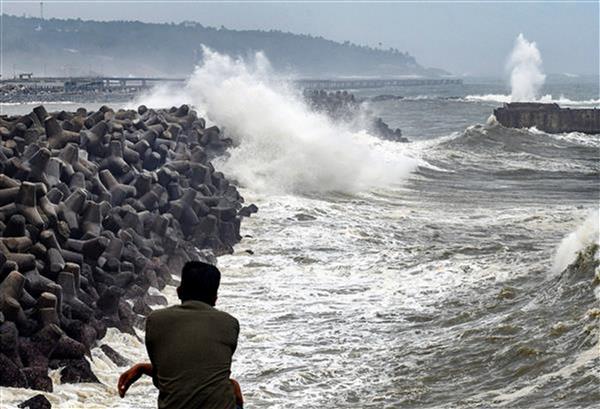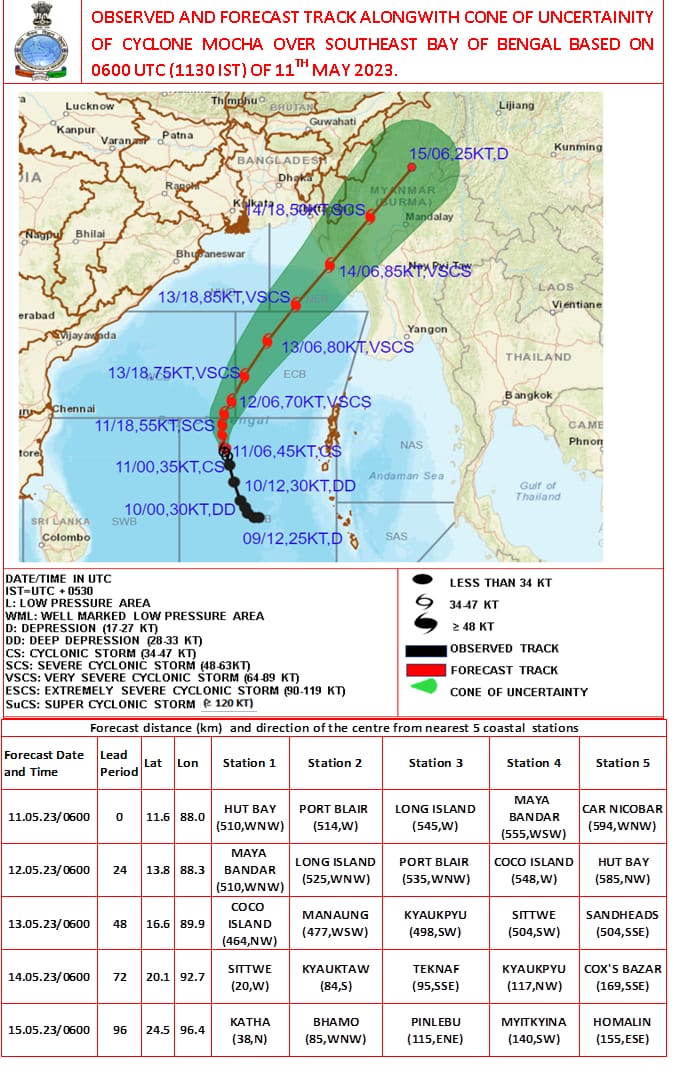
Photo for representation
Vibha Sharma
Chandigarh, May 11
The IMD on Thursday said ‘Mocha’ will become a ‘severe cyclonic storm’ tonight, further intensify into a ‘very severe cyclonic storm’ by Friday morning and reach its peak intensity around the evening of May 13.
It is expected to cross southeast Bangladesh and north Myanmar coasts between Cox’s Bazar (Bangladesh) and Kyaukpyu (Myanmar), close to Sittwe (Myanmar) around May 14 noon with maximum sustained wind speed of 150-160 kmph gusting to 175 kmph, according to IMD bulletin at this hour.

While the cyclone will spare India of a direct hit, heavy rains will occur in Andaman Nicobar Island, Tripura, Mizoram, Nagaland, Manipur and south Assam, as per the IMD.
Classification of cyclones
According to IMD’s classification, ‘super cyclone’ is the highest category of tropical storms.
A system/‘low pressure area’ develops into a ‘depression’ and further intensifies into ‘deep depression’, ‘severe cyclone’, ‘very severe cyclone’ and ‘extremely severe cyclone’.
A slow progress and extended stay over the sea gives a cyclone space and time to intensify. After the landfall, it loses steam and follows the same nomenclature process before fizzling out.
Cyclone Mocha is the latest tropical storm brewing in the Bay of Bengal.
It is only after a system graduates to the level of a cyclone that it gets a name.
Tropical cyclones are named as per the set procedure at the regional level—names that are easy to remember and pronounce, and are not controversial.
They are pre-decided and assigned sequentially whenever a depression graduates into a cyclone.
For tropical cyclones in the north Indian Ocean region, the names are decided by eight countries of the region—Bangladesh, India, Maldives, Myanmar, Oman, Pakistan, Sri Lanka and Thailand.
North Indian Ocean region
Over the past few years, there has been an increase in the activity in the north Indian Ocean region, which the experts link to global warming and abnormally warm sea surface temperatures (SSTs).
While it is said to be the least active basin, contributing only seven per cent of the world’s tropical cyclones, it has produced some of the deadliest cyclones in the world considering that they normally strike over very densely populated areas.
The region is divided into two sub-basins—the Bay of Bengal and the Arabian Sea. Experts say the frequency and intensity of cyclones developing over the Arabian Sea has increased in the last two decades,
“The intensity of severe cyclonic storms in the North Indian Ocean region has shown an increasing trend in the past four decades, says a recent study by Indian scientists. The increasing intensity of severe cyclonic storms with major socioeconomic implications was due to atmospheric parameters like higher relative humidity, especially at mid-atmospheric level, weak vertical wind shear as well as warm sea surface temperature. This indicates the role of global warming in bringing about this increasing trend,” according to a report on the DST website.
“The impact of global warming due to climate change and its effect on extreme weather events such as frequency and high-intensity tropical cyclones formed over global ocean basins is a matter of concern. High-intensity cyclones have become more frequent in the North Indian Ocean, causing significant risk and vulnerability to the coastal regions,” it adds.
Just like a rocket is powered by hydrogen and oxygen, cyclones/hurricanes are powered by water vapour and more global heating means more water vapours and more power to the cyclones, experts say.
India’s cyclone prediction
Over the years, India has improved its cyclone prediction capabilities considerably.
Improved technology has made it possible to predict at least five days in advance the area of occurrence, time and point of landfall, wind velocity and wave height of a cyclone, giving ample time to disaster management to get into action.
Join Whatsapp Channel of The Tribune for latest updates.
#bangladesh #climate #cyclone #Environment #globalwarming #Mocha #weather




























